Introduction to Networking
Chapter 1: Introduction to TCP/IP Networking
- TCP/IP Networking Model
- History Leading to TCP/IP
- Overview of the TCP/IP Networking Model
- TCP/IP Application Layer
- HTTP Overview
- HTTP Protocol Mechanisms
- TCP/IP Transport Layer
- TCP Error Recovery Basics
- Same-Layer and Adjacent-Layer Interactions
- TCP/IP Network Layer
- Internet Protocol and the Postal Service
- Internet Protocol Addressing Basics
- IP Routing Basics
- TCP/IP Data-Link and Physical Layers
- Data Encapsulation Terminology
- Names of TCP/IP Messages
- OSI Networking Model and Terminology
- Comparing OSI and TCP/IP Layer Names and Numbers
- OSI Data Encapsulation Terminology
Chapter 2: Fundamentals of Ethernet LANs
- An Overview of LANs
- SOHO LANs
- Enterprise LANs
- The Variety of Ethernet Physical Layer Standards
- Consistent Behavior over All Links Using the Ethernet Data-Link Layer
- Building Physical Ethernet LANs with UTP
- Transmitting Data Using Twisted Pairs
- Breaking Down a UTP Ethernet Link
- UTP Cabling Pinouts for 10BASE-T and 100BASE-T
- Straight-Through Cable Pinout
- Choosing the Right Cable Pinouts
- UTP Cabling Pinouts for 1000BASE-T
- Building Physical Ethernet LANs with Fiber
- Fiber Cabling Transmission Concepts
- Using Fiber with Ethernet
- Sending Data in Ethernet Networks
- Ethernet Data-Link Protocols
- Ethernet Addressing
- Identifying Network Layer Protocols with the Ethernet Type Field
- Error Detection with FCS
- Sending Ethernet Frames with Switches and Hubs
- Sending in Modern Ethernet LANs Using Full Duplex
- Using Half Duplex with LAN Hubs
Chapter 3: Fundamentals of WANs and IP Routing
- Wide-Area Networks
- Leased-Line WANs
- Physical Details of Leased Lines
- HDLC Data-Link Details of Leased Lines
- How Routers Use a WAN Data Link
- Ethernet as a WAN Technology
- Ethernet WANs That Create a Layer 2 Service
- How Routers Route IP Packets Using Ethernet Emulation
- IP Routing
- Network Layer Routing (Forwarding) Logic
- Host Forwarding Logic: Send the Packet to the Default Router
- R1 and R2’s Logic: Routing Data Across the Network
- R3’s Logic: Delivering Data to the End Destination
- How Network Layer Routing Uses LANs and WAN
- How IP Addressing Helps IP Routing
- Rules for Groups of IP Addresses (Networks and Subnets)
- The IP Header
- How IP Routing Protocols Help IP Routing
- Other Network Layer Features
- Using Names and the Domain Name System
- The Address Resolution Protocol
- ICMP Echo and the ping Command
Implementing Ethernet LANs
Chapter 4: Using the Command-Line Interface
- Accessing the Cisco Catalyst Switch CLI
- Cisco Catalyst Switches
- Accessing the Cisco IOS CLI
- Cabling the Console Connection
- Accessing the CLI with Telnet and SSH
- User and Enable (Privileged) Modes
- Password Security for CLI Access from the Console
- CLI Help Features
- The debug and show Commands
- Configuring Cisco IOS Software
- Configuration Submodels and Contexts
- Storing Switch Configuration Files
- Copying and Erasing Configuration Files
Chapter 5: Analysing Ethernet LAN Switching
- LAN Switching Concepts
- Overview of Switching Logic
- Forwarding Known Unicast Frames
- Learning MAC Addresses
- Flooding Unknown Unicast and Broadcast Frames
- Avoiding Loops Using Spanning Tree Protocol
- LAN Switching Summary
- Verifying and Analyzing Ethernet Switching
- Demonstrating MAC Learning
- Switch Interfaces
- Finding Entries in the MAC Address Table
- Managing the MAC Address Table (Aging, Clearing)
- MAC Address Tables with Multiple Switches
Chapter 6: Configuring Basic Switch Management
- Securing the Switch CLI
- Securing User Mode and Privileged Mode with Simple Passwords
- Securing User Mode Access with Local Usernames and Passwords
- Securing User Mode Access with External Authentication Servers
- Securing Remote Access with Secure Shell
- Enabling IPv4 for Remote Access
- Host and Switch IP Settings
- Configuring IPv4 on a Switch
- Configuring a Switch to Learn Its IP Address with DHCP
- Verifying IPv4 on a Switch
- Miscellaneous Settings Useful in the Lab
- History Buffer Commands
- The logging synchronous, exec-timeout, and no ip domain-lookup Commands
Chapter 7: Configuring and Verifying Switch Interfaces
- Configuring Switch Interfaces
- Configuring Speed, Duplex, and Description
- Configuring Multiple Interfaces with the interface range Command
- Administratively Controlling Interface State with shutdown
- Removing Configuration with the no Command
- Auto-negotiation
- Auto-negotiation Under Working Conditions
- Auto-negotiation Results When Only One Node Uses Autonegotiation
- Auto-negotiation and LAN Hubs
- Analyzing Switch Interface Status and Statistics
- Interface Status Codes and Reasons for Nonworking States
- Interface Speed and Duplex Issues
- Common Layer 1 Problem on Working Interfaces
Implementing VLANs and STP
Chapter 8: Implementing Ethernet Virtual LANs
- Virtual LAN Concepts
- Creating Multiswitch VLANs Using Trunking
- VLAN Tagging Concepts
- The 802.1Q and ISL VLAN Trunking Protocols
- Forwarding Data Between VLANs
- The Need for Routing Between VLANs
- Routing Packets Between VLANs with a Router
- VLAN and VLAN Trunking Configuration and Verification
- Creating VLANs and Assigning Access VLANs to an Interface
- VLAN Configuration Example 1: Full VLAN Configuration
- VLAN Configuration Example 2: Shorter VLAN Configuration
- VLAN Trunking Protocol
- VLAN Trunking Configuration
- Implementing Interfaces Connected to Phones
- Data and Voice VLAN Concepts
- Data and Voice VLAN Configuration and Verification
- Summary: IP Telephony Ports on Switches
- Troubleshooting VLANs and VLAN Trunks
- Access VLANs Undefined or Disabled
- Mismatched Trunking Operational State
- The Supported VLAN List on Trunks
- Mismatched Native VLAN on a Trunk
Chapter 9: Spanning Tree Protocol Concepts
- STP and RSTP Basics
- The Need for Spanning Tree
- What Spanning Tree Does
- How Spanning Tree Works
- The STP Bridge ID and Hello BPDU
- Electing the Root Switch
- Choosing Each Switch’s Root Port
- Choosing the Designated Port on Each LAN Segment
- Configuring to Influence the STP Topology
- Details Specific to STP (and Not RSTP)
- STP Activity When the Network Remains Stable
- STP Timers That Manage STP Convergence
- Changing Interface States with STP
- Rapid STP Concepts
- Comparing STP and RSTP
- RSTP and the Alternate (Root) Port Role
- RSTP States and Processes
- RSTP and the Backup (Designated) Port Role
- RSTP Port Types
- Optional STP Features
- EtherChannel
- PortFast
- BPDU Guard
Chapter 10: RSTP and EtherChannel Configuration
- Understanding RSTP Through Configuration
- The Need for Multiple Spanning Trees
- STP Modes and Standards
- The Bridge ID and System ID Extension
- How Switches Use the Priority and System ID Extension
- RSTP Methods to Support Multiple Spanning Trees
- Other RSTP Configuration Options
- Configuring Layer 2 EtherChannel
- Configuring a Manual Layer 2 EtherChannel
- Configuring Dynamic EtherChannels
- Physical Interface Configuration and EtherChannels
- EtherChannel Load Distribution
- Configuration Options for EtherChannel Load Distribution
- The Effects of the EtherChannel Load Distribution Algorithm
IPv4 Addressing
Chapter 11: Perspectives on IPv4 Subnetting
- Introduction to Subnetting
- Subnetting Defined Through a Simple Example
- Operational View Versus Design View of Subnetting
- Analyze Subnetting and Addressing Needs
- Rules About Which Hosts Are in Which Subnet
- Determining the Number of Subnets
- Determining the Number of Hosts per Subnet
- One Size Subnet Fits All—Or Not
- Defining the Size of a Subnet
- One Size Subnet Fits All
- Multiple Subnet Sizes (Variable-Length Subnet Masks)
- One Mask for All Subnets, or More Than One
- Make Design Choices
- Choose a Classful Network
- Public IP Networks
- Growth Exhausts the Public IP Address Space
- Private IP Networks
- Choosing an IP Network During the Design Phase
- Choose the Mask
- Classful IP Networks Before Subnetting
- Borrowing Host Bits to Create Subnet Bits
- Choosing Enough Subnet and Host Bits
- Example Design: 172.16.0.0, 200 Subnets, 200 Hosts
- Masks and Mask Formats
- Build a List of All Subnets
- Plan the Implementation
- Assigning Subnets to Different Locations
- Choose Static and Dynamic Ranges per Subnet
Chapter 12: Analysing Classful IPv4 Networks
- Classful Network Concepts
- IPv4 Network Classes and Related Facts
- The Number and Size of Class A, B, and C Networks
- Address Formats
- Default Masks
- Number of Hosts per Network
- Deriving the Network ID and Related Numbers
- Unusual Network IDs and Network Broadcast Addresses
- Practice with Classful Networks
- Practice Deriving Key Facts Based on an IP Address
- Practice Remembering the Details of Address Classes
Chapter 13: Analyzing Subnet Masks
- Subnet Mask Conversion
- Three Mask Formats
- Converting Between Binary and Prefix Masks
- Converting Between Binary and DDN Masks
- Converting Between Prefix and DDN Masks
- Practice Converting Subnet Masks
- Identifying Subnet Design Choices Using Masks
- Masks Divide the Subnet’s Addresses into Two Parts
- Masks and Class Divide Addresses into Three Parts
- Classless and Classful Addressing
- Calculations Based on the IPv4 Address Format
- Practice Analyzing Subnet Masks
Chapter 14: Analyzing Existing Subnets
- Defining a Subnet
- An Example with Network 172.16.0.0 and Four Subnets
- Subnet ID Concepts
- Subnet Broadcast Address
- Range of Usable Addresses
- Analyzing Existing Subnets: Binary
- Finding the Subnet ID: Binary
- Finding the Subnet Broadcast Address: Binary
- Binary Practice Problems
- Shortcut for the Binary Process
- Brief Note About Boolean Math
- Finding the Range of Addresses
- Analyzing Existing Subnets: Decimal
- Analysis with Easy Masks
- Predictability in the Interesting Octet
- Finding the Subnet ID: Difficult Masks
- Resident Subnet Example 1
- Resident Subnet Example 2
- Resident Subnet Practice Problems
- Finding the Subnet Broadcast Address: Difficult Masks
- Subnet Broadcast Example 1
- Subnet Broadcast Example 2
- Subnet Broadcast Address Practice Problems
- Practice Analyzing Existing Subnets
- A Choice: Memorize or Calculate
IPv4 Routing
Chapter 15: Operating Cisco Routers
- Installing Cisco Routers
- Installing Enterprise Routers
- Cisco Integrated Services Routers
- Physical Installation
- Installing SOHO Routers
- Enabling IPv4 Support on Cisco Router Interfaces
- Accessing the Router CLI
- Router Interfaces
- Interface Status Codes
- Router Interface IP Addresses
- Bandwidth and Clock Rate on Serial Interfaces
- Router Auxiliary Port
Chapter 16: Configuring IPv4 Addresses and Static Routes
- IP Routing
- IPv4 Routing Process Reference
- An Example of IP Routing
- Host Forwards the IP Packet to the Default Router (Gateway)
- Routing Step 1: Decide Whether to Process the Incoming Frame
- Routing Step 2: De-encapsulation of the IP Packet
- Routing Step 3: Choosing Where to Forward the Packet
- Routing Step 4: Encapsulating the Packet in a New Frame
- Routing Step 5: Transmitting the Frame
- Configuring IP Addresses and Connected Routes
- Connected Routes and the ip address Command
- The ARP Table on a Cisco Router
- Configuring Static Routes
- Static Network Routes
- Static Host Routes
- Floating Static Routes
- Static Default Routes
- Troubleshooting Static Routes
- Troubleshooting Incorrect Static Routes That Appear in the IP Routing Table
- The Static Route Does Not Appear in the IP Routing Table
- The Correct Static Route Appears but Works Poorly
- IP Forwarding with the Longest Prefix Match
- Using show ip route to Find the Best Route
- Using show ip route address to Find the Best Route
- Interpreting the IP Routing Table
Chapter 17: IP Routing in the LAN
- VLAN Routing with Router 802.1Q Trunks
- Configuring ROAS
- Verifying ROAS
- Troubleshooting ROAS
- VLAN Routing with Layer 3 Switch SVIs
- Configuring Routing Using Switch SVIs
- Verifying Routing with SVIs
- Troubleshooting Routing with SVIs
- VLAN Routing with Layer 3 Switch Routed Ports
- Implementing Routed Interfaces on Switches
- Implementing Layer 3 EtherChannels
- Troubleshooting Layer 3 EtherChannels
Chapter 18: Troubleshooting IPv4 Routing
- Problem Isolation Using the Ping Command
- Ping Command Basics
- Strategies and Results When Testing with the Ping Command
- Testing Longer Routes from Near the Source of the Problem
- Using Extended Ping to Test the Reverse Route
- Testing LAN Neighbors with Standard Ping
- Testing LAN Neighbors with Extended Ping
- Testing WAN Neighbors with Standard Ping
- Using Ping with Names and with IP Addresses
- Problem Isolation Using the Traceroute Command
- Traceroute Basics
- How the Traceroute Command Works
- Standard and Extended Traceroute
- Telnet and SSH
- Common Reasons to Use the IOS Telnet and SSH Client
- IOS Telnet and SSH Examples
OSPF
Chapter 19: Understanding OSPF Concepts
- Comparing Dynamic Routing Protocol Features
- Routing Protocol Functions
- Interior and Exterior Routing Protocols
- Comparing IGPs
- IGP Routing Protocol Algorithms
- Metrics
- Other IGP Comparisons
- Administrative Distance
- OSPF Concepts and Operation
- OSPF Overview
- Topology Information and LSAs
- Applying Dijkstra SPF Math to Find the Best Routes
- Becoming OSPF Neighbors
- The Basics of OSPF Neighbors
- Meeting Neighbors and Learning Their Router ID
- Exchanging the LSDB Between Neighbors
- Fully Exchanging LSAs with Neighbors
- Maintaining Neighbors and the LSDB
- Using Designated Routers on Ethernet Links
- Calculating the Best Routes with SPF
- OSPF Areas and LSAs
- OSPF Areas
- How Areas Reduce SPF Calculation Time
- (OSPFv2) Link-State Advertisements
- Router LSAs Build Most of the Intra-Area Topology
- Network LSAs Complete the Intra-Area Topology
Chapter 20: Implementing OSPF
- Implementing Single-Area OSPFv2
- OSPF Single-Area Configuration
- Wildcard Matching with the network Command
- Verifying OSPF Operation
- Verifying OSPF Configuration
- Configuring the OSPF Router ID
- Implementing Multiarea OSPF
- Using OSPFv2 Interface Subcommands
- OSPF Interface Configuration Example
- Verifying OSPF Interface Configuration
- Additional OSPFv2 Features
- OSPF Passive Interfaces
- OSPF Default Routes
- OSPF Metrics (Cost)
- Setting the Cost Directly
- Setting the Cost Based on Interface and Reference Bandwidth
- OSPF Load Balancing
Chapter 21: OSPF Network Types and Neighbors
- OSPF Network Types
- The OSPF Broadcast Network Type
- Verifying Operations with Network Type Broadcast
- Configuring to Influence the DR/BDR Election
- The OSPF Point-to-Point Network Type
- OSPF Neighbor Relationships
- OSPF Neighbor Requirements
- Issues That Prevent Neighbor Adjacencies
- Finding Area Mismatches
- Finding Duplicate OSPF Router IDs
- Finding OSPF Hello and Dead Timer Mismatches
- Shutting Down the OSPF Process
- Issues That Allow Adjacencies but Prevent IP Routes
- Mismatched MTU Settings
- Mismatched OSPF Network Types
IP Version 6
Chapter 22: Fundamentals of IP Version 6
- Introduction to IPv6
- The Historical Reasons for IPv6
- The IPv6 Protocols
- IPv6 Routing
- IPv6 Routing Protocols
- IPv6 Addressing Formats and Conventions
- Representing Full (Unabbreviated) IPv6 Addresses
- Abbreviating and Expanding IPv6 Addresses
- Abbreviating IPv6 Addresses
- Expanding Abbreviated IPv6 Addresses
- Representing the Prefix Length of an Address
- Calculating the IPv6 Prefix (Subnet ID)
- Finding the IPv6 Prefix
- Working with More Difficult IPv6 Prefix Lengths
Chapter 23: IPv6 Addressing and Subnetting
- Global Unicast Addressing Concepts
- Public and Private IPv6 Addresses
- The IPv6 Global Routing Prefix
- Address Ranges for Global Unicast Addresses
- IPv6 Subnetting Using Global Unicast Addresses
- Deciding Where IPv6 Subnets Are Needed
- The Mechanics of Subnetting IPv6 Global Unicast Addresses
- Listing the IPv6 Subnet Identifier
- List All IPv6 Subnets
- Assign Subnets to the Internetwork Topology
- Assigning Addresses to Hosts in a Subnet
- Unique Local Unicast Addresses
- Subnetting with Unique Local IPv6 Addresses
- The Need for Globally Unique Local Addresses
Chapter 24: Implementing IPv6 Addressing Routers
- Implementing Unicast IPv6 Addresses on Routers
- Static Unicast Address Configuration
- Configuring the Full 128-Bit Address
- Enabling IPv6 Routing
- Verifying the IPv6 Address Configuration
- Generating a Unique Interface ID Using Modified EUI-64
- Dynamic Unicast Address Configuration
- Special Addresses Used by Routers
- Link-Local Addresses
- Link-Local Address Concepts
- Creating Link-Local Addresses on Routers
- Routing IPv6 with Only Link-Local Addresses on an Interface
- IPv6 Multicast Addresses
- Reserved Multicast Addresses
- Multicast Address Scopes
- Solicited-Node Multicast Addresses
- Miscellaneous IPv6 Addresses
- Anycast Addresses
- IPv6 Addressing Configuration Summary
Chapter 25: Implementing IPv6 Routing
- Connected and Local IPv6 Routes
- Rules for Connected and Local Routes
- Example of Connected IPv6 Routes
- Examples of Local IPv6 Routes
- Static IPv6 Routes
- Static Routes Using the Outgoing Interface
- Static Routes Using Next-Hop IPv6 Address
- Example Static Route with a Global Unicast Next-Hop Address
- Example Static Route with a Link-Local Next-Hop Address
- Static Routes over Ethernet Links
- Static Default Routes
- Static IPv6 Host Routes
- Floating Static IPv6 Routes
- Troubleshooting Static IPv6 Routes
- Troubleshooting Incorrect Static Routes That Appear in the IPv6 Routing Table
- The Static Route Does Not Appear in the IPv6 Routing Table
- The Neighbor Discovery Protocol
- Discovering Neighbor Link Addresses with NDP NS and NA
- Discovering Routers with NDP RS and RA
- Using SLAAC with NDP RS and RA
- Discovering Duplicate Addresses Using NDP NS and NA
- NDP Summary
Wireless LANs
Chapter 26: Fundamentals of Wireless Networks
- Comparing Wired and Wireless Networks
- Wireless LAN Topologies
- Basic Service Set
- Distribution System
- Extended Service Set
- Independent Basic Service Set
- Other Wireless Topologies
- Repeater
- Workgroup Bridge
- Outdoor Bridge
- Mesh Network
- RF Overview
- Wireless Bands and Channels
- APs and Wireless Standards
Chapter 27: Analysing Cisco Wireless Architectures
- Autonomous AP Architecture
- Cloud-based AP Architecture
- Split-MAC Architectures
- Comparing Wireless LAN Controller Deployments
- Cisco AP Modes
Chapter 28: Securing Wireless Networks
- Anatomy of a Secure Connection
- Authentication
- Message Privacy
- Message Integrity
- Wireless Client Authentication Methods
- Open Authentication
- WEP
- 802.1x/EAP
- LEAP
- EAP-FAST
- PEAP
- EAP-TLS
- Wireless Privacy and Integrity Methods
- TKIP
- CCMP
- GCMP
- WPA, WPA2, and WPA3
Chapter 29: Building a Wireless LAN
- Connecting a Cisco AP
- Accessing a Cisco WLC
- Connecting a Cisco WLC
- Using WLC Ports
- Using WLC Interfaces
- Configuring a WLAN
- Step 1. Configure a RADIUS Server
- Step 2. Create a Dynamic Interface
- Step 3. Create a New WLAN
- Configuring WLAN Security
- Configuring WLAN QoS
- Configuring Advanced WLAN Settings
- Finalizing WLAN Configuration
IP Access Control Lists
Chapter 30: Introduction to TCP/IP Transport and Applications
- TCP/IP Layer 4 Protocols: TCP and UDP
- Transmission Control Protocol
- Multiplexing Using TCP Port Numbers
- Popular TCP/IP Applications
- Connection Establishment and Termination
- Error Recovery and Reliability
- Flow Control Using Windowing
- User Datagram Protocol
- TCP/IP Applications
- Uniform Resource Identifiers
- Finding the Web Server Using DNS
- Transferring Files with HTTP
- How the Receiving Host Identifies the Correct Receiving Application
Chapter 31: Basic IPv4 Access Control Lists
- IPv4 Access Control List Basics
- ACL Location and Direction
- Matching Packets
- Taking Action When a Match Occurs
- Types of IP ACLs
- Standard Numbered IPv4 ACLs
- List Logic with IP ACLs
- Matching Logic and Command Syntax
- Matching the Exact IP Address
- Matching a Subset of the Address with Wildcards
- Binary Wildcard Masks
- Finding the Right Wildcard Mask to Match a Subnet
- Matching Any/All Addresses
- Implementing Standard IP ACLs
- Standard Numbered ACL Example 1
- Standard Numbered ACL Example 2
- Troubleshooting and Verification Tip
- Practice Applying Standard IP ACLs
- Practice Building access-list Commands
- Reverse Engineering from ACL to Address Range
Chapter 32: Advanced IPv4 Access Control Lists
- Extended Numbered IP Access Control Lists
- Matching the Protocol, Source IP, and Destination IP
- Matching TCP and UDP Port Numbers
- Extended IP ACL Configuration
- Extended IP Access Lists: Example 1
- Extended IP Access Lists: Example 2
- Practice Building access-list Commands
- Named ACLs and ACL Editing
- Named IP Access Lists
- Editing ACLs Using Sequence Numbers
- Numbered ACL Configuration Versus Named ACL Configuration
- ACL Implementation Considerations
- Additional Reading on ACLs
Security Services
Chapter 33: Security Architectures
- Security Terminology
- Common Security Threats
- Attacks That Spoof Addresses
- Denial-of-Service Attacks
- Reflection and Amplification Attacks
- Man-in-the-Middle Attacks
- Address Spoofing Attack Summary
- Reconnaissance Attacks
- Buffer Overflow Attacks
- Malware
- Human Vulnerabilities
- Password Vulnerabilities
- Password Alternatives
- Controlling and Monitoring User Access
- Developing a Security Program to Educate Users
Chapter 34: Securing Network Devices
- Securing IOS Passwords
- Encrypting Older IOS Passwords with service password-encryption
- Encoding the Enable Passwords with Hashes
- Interactions Between Enable Password and Enable Secret
- Making the Enable Secret Truly Secret with a Hash
- Improved Hashes for Cisco’s Enable Secret
- Encoding the Passwords for Local Usernames
- Controlling Password Attacks with ACLs
- Firewalls and Intrusion Prevention Systems
- Traditional Firewalls
- Security Zones
- Intrusion Prevention Systems (IPS)
- Cisco Next-Generation Firewalls
- Cisco Next-Generation IPS
Chapter 35: Implementing Switch Port Security
- Port Security Concepts and Configuration
- Configuring Port Security
- Verifying Port Security
- Port Security MAC Addresses
- Port Security Violation Modes
- Port Security Shutdown Mode
- Port Security Protect and Restrict Modes
Chapter 36: Implementing DHCP
- Dynamic Host Configuration Protocol
- DHCP Concepts
- Supporting DHCP for Remote Subnets with DHCP Relay
- Information Stored at the DHCP Server
- Configuring DHCP Features on Routers and Switches
- Configuring DHCP Relay
- Configuring a Switch as DHCP Client
- Configuring a Router as DHCP Client
- Identifying Host IPv4 Settings
- Host Settings for IPv4
- Host IP Settings on Windows
- Host IP Settings on macOS
- Host IP Settings on Linux
Chapter 37: DHCP Snooping and ARP Inspection
- DHCP Snooping Concepts
- A Sample Attack: A Spurious DHCP Server
- DHCP Snooping Logic
- Filtering DISCOVER Messages Based on MAC Address
- Filtering Messages that Release IP Addresses
- DHCP Snooping Configuration
- Configuring DHCP Snooping on a Layer 2 Switch
- Limiting DHCP Message Rates
- DHCP Snooping Configuration Summary
- Dynamic ARP Inspection
- DAI Concepts
- Review of Normal IP ARP
- Gratuitous ARP as an Attack Vector
- Dynamic ARP Inspection Logic
- Dynamic ARP Inspection Configuration
- Configuring ARP Inspection on a Layer 2 Switch
- Limiting DAI Message Rates
- Configuring Optional DAI Message Checks
- IP ARP Inspection Configuration Summary
IP Services
Chapter 38: Device Management Protocols
- System Message Logging (Syslog)
- Sending Messages in Real Time to Current Users
- Storing Log Messages for Later Review
- Log Message Format
- Log Message Severity Levels
- Configuring and Verifying System Logging
- The debug Command and Log Messages
- Network Time Protocol (NTP)
- Setting the Time and Timezone
- Basic NTP Configuration
- NTP Reference Clock and Stratum
- Redundant NTP Configuration
- NTP Using a Loopback Interface for Better Availability
- Analyzing Topology Using CDP and LLDP
- Examining Information Learned by CDP
- Configuring and Verifying CDP
- Examining Information Learned by LLDP
- Configuring and Verifying LLDP
Chapter 39: Network Address Translation
- Perspectives on IPv4 Address Scalability
- CIDR
- Private Addressing
- Network Address Translation Concepts
- Static NAT
- Dynamic NAT
- Overloading NAT with Port Address Translation
- NAT Configuration and Troubleshooting
- Static NAT Configuration
- Dynamic NAT Configuration
- Dynamic NAT Verification
- NAT Overload (PAT) Configuration
- NAT Troubleshooting
Chapter 40: Quality of Service (QoS)
- Introduction to QoS
- QoS: Managing Bandwidth, Delay, Jitter, and Loss
- Types of Traffic
- Data Applications
- Voice and Video Applications
- QoS, as mentioned in The Book
- QoS on Switches and Routers
- Classification and Marking
- Classification Basics
- Matching (Classification) Basics
- Classification of Routers with ACLs and NBAR
- Marking IP DSCP and Ethernet CoS
- Marking the IP Header
- Marking the Ethernet 802.1Q Header
- Other Marking Fields
- Defining Trust Boundaries
- DiffServ Suggested Marking Values
- Expedited Forwarding (EF)
- Assured Forwarding (AF)
- Class Selector (CS)
- Guidelines for DSCP Marking Values
- Queuing
- Round-Robin Scheduling (Prioritization)
- Low Latency Queuing
- A Prioritization Strategy for Data, Voice, and Video
- Shaping and Policing
- Policing
- Where to Use Policing
- Shaping
- Setting a Good Shaping Time Interval for Voice and Video
- Congestion Avoidance
- TCP Windowing Basics
- Congestion Avoidance Tools
Chapter 41: Miscellaneous IP Services
- First Hop Redundancy Protocol
- The Need for Redundancy in Networks
- The Need for a First Hop Redundancy Protocol
- The Three Solutions for First-Hop Redundancy
- HSRP Concepts
- HSRP Failover
- HSRP Load Balancing
- Simple Network Management Protocol
- SNMP Variable Reading and Writing: SNMP Get and Set
- SNMP Notifications: Traps and Informs
- The Management Information Base
- Securing SNMP FTP and TFTP
- Managing Cisco IOS Images with
- FTP/TFTP
- The IOS File System
- Upgrading IOS Images
- Copying a New iOS Image to a Local iOS File System Using TFTP
- Verifying IOS Code Integrity with MD5
- Copying Images with FTP
- The FTP and TFTP Protocols
- FTP Protocol Basics
- FTP Active and Passive Modes
- FTP over TLS (FTP Secure)
- TFTP Protocol Basics
Network Architecture
Chapter 42: LAN Architecture
- Analyzing Campus LAN Topologies
- Two-Tier Campus Design (Collapsed Core)
- The Two-Tier Campus Design
- Topology Terminology Seen Within a Two-Tier Design
- Three-Tier Campus Design (Core)
- Topology Design Terminology
- Small Office/Home Office
- Power over Ethernet (PoE)
- PoE Basics
- PoE Operation
- PoE and LAN Design
Chapter 43: WAN Architecture
- Metro Ethernet
- Metro Ethernet Physical Design and Topology
- Ethernet WAN Services and Topologies
- Ethernet Line Service (Point-to-Point)
- Ethernet LAN Service (Full Mesh)
- Ethernet Tree Service (Hub and Spoke)
- Layer 3 Design Using Metro Ethernet
- Layer 3 Design with E-Line Service
- Layer 3 Design with E-LAN Service
- Multiprotocol Label Switching (MPLS)
- MPLS VPN Physical Design and Topology
- MPLS and Quality of Service
- Layer 3 with MPLS VPN
- Internet VPNs
- Internet Access
- Digital Subscriber Line
- Cable Internet
- Wireless WAN (3G, 4G, LTE, 5G)
- Fiber (Ethernet) Internet Access
- Internet VPN Fundamentals
- Site-to-Site VPNs with IPsec
- Remote Access VPNs with TLS
- VPN Comparisons
Chapter 44: Cloud Architecture
- Server Virtualization
- Cisco Server Hardware
- Server Virtualization Basics
- Networking with Virtual Switches on a
- Virtualized Host
- The Physical Data Center Network
- Workflow with a Virtualized Data Center
- Cloud Computing Services
- Private Cloud (On-Premise)
- Public Cloud
- Cloud and the “Software as a Service” Model
- Infrastructure as a Service
- Software as a Service
- (Development) Platform as a Service
- WAN Traffic Paths to Reach Cloud Services
- Enterprise WAN Connections to Public Cloud
- Accessing Public Cloud Services Using the Internet
- Pros and Cons of Connecting to Public Cloud with Internet
- Private WAN and Internet VPN Access to Public Cloud
- Pros and Cons of Connecting to the Cloud with Private WANs
- Intercloud Exchanges
- Summarizing the Pros and Cons of Public Cloud WAN Options
- A Scenario: Branch Offices and the Public Cloud
- Migrating Traffic Flows When Migrating to Email SaaS
- Branch Of ices with Internet and Private WAN
Network Automation
Chapter 45: Introduction to Controller-Based Networking
- SDN and Controller-Based Networks
- The Data, Control, and Management Planes
- The Data Plane
- The Control Plane
- The Management Plane
- Cisco Switch Data Plane Internals
- Controllers and Software-Defined Architecture
- Controllers and Centralized Control
- The Southbound Interface
- The Northbound Interface
- Software Defined Architecture Summary
- Examples of Network Programmability and SDN
- OpenDaylight and OpenFlow
- The OpenDaylight Controller
- The Cisco Open SDN Controller (OSC)
- Cisco Application Centric Infrastructure (ACI)
- ACI Physical Design: Spine and Leaf
- ACI Operating Model with Intent-Based Networking
- Cisco APIC Enterprise Domain
- APIC-EM Basics
- APIC-EM Replacement
- Summary of the SDN Examples
- Comparing Traditional Versus Controller-Based Networks
- How Automation Impacts Network Management
- Comparing Traditional Networks with Controller-Based Networks
Chapter 46: Cisco Software-Defined Access (SDA)
- SDA Fabric, Underlay, and Overlay
- The SDA Underlay
- Using Existing Gear for the SDA Underlay
- Using New Gear for the SDA Underlay
- The SDA Overlay
- VXLAN Tunnels in the Overlay (Data Plane)
- LISP for Overlay Discovery and Location (Control Plane)
- DNA Center and SDA Operation
- Cisco DNA Center
- Cisco DNA Center and Scalable Groups
- Issues with Traditional IP-Based Security
- SDA Security Based on User Groups
- DNA Center as a Network Management Platform
- DNA Center Similarities to Traditional Management
- DNA Center Differences with Traditional Management
Chapter 47: Understanding REST and JSON
- REST-Based APIs
- REST-Based (RESTful) APIs
- Client/Server Architecture
- Stateless Operation
- Cacheable (or not)
- Background: Data and Variables
- Simple Variables
- List and Dictionary Variables
- REST APIs and HTTP
- Software CRUD Actions and HTTP Verbs
- Using URIs with HTTP to Specify the Resource
- Example of REST API Call to DNA Center
- Data Serialization and JSON
- The Need for a Data Model with APIs
- Data Serialization Languages
- JSON
- XML
- YAML
- Summary of Data Serialization
- Interpreting JSON
- Interpreting JSON Key: Value Pairs
- Interpreting JSON Objects and Arrays
- Minified and Beautified JSON
Chapter 48: Understanding Ansible, Puppet, and Chef
- Device Configuration Challenges and Solutions
- Configuration Drift
- Centralized Configuration Files and Version Control
- Configuration Monitoring and Enforcement
- Configuration Provisioning
- Configuration Templates and Variables
- Files That Control Configuration Automation
- Ansible, Puppet, and Chef Basics
- Ansible
- Puppet
- Chef
- Summary of Configuration Management Tool
 Read Reviews
Read Reviews





 5th Sep: Weekend
5th Sep: Weekend 



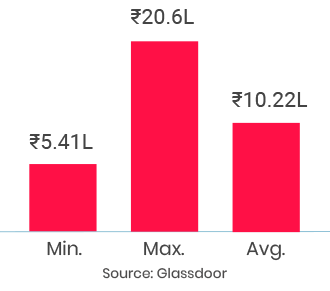
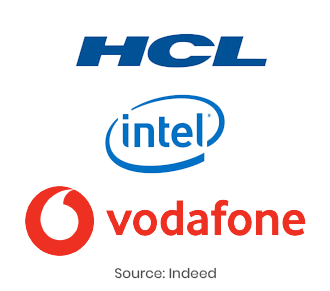
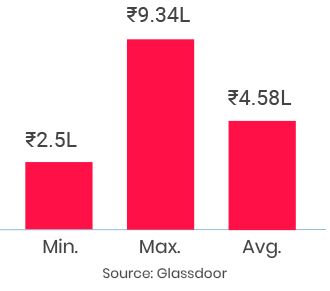
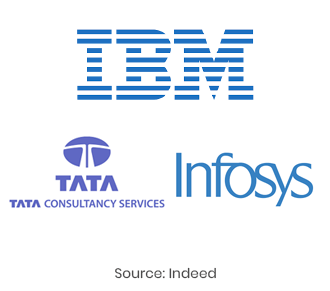
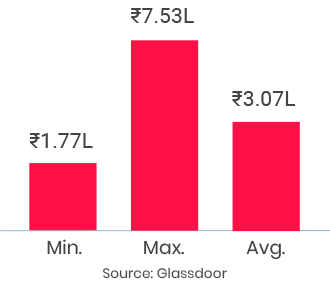
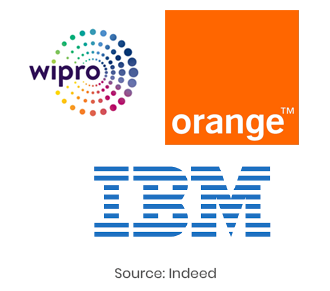


 The training was awesome. Helped me clear my concepts and also reduced my preparation time to 1/3rd. Thank you, trainer, for all your dedication to bring your gladiators to pace.
The training was awesome. Helped me clear my concepts and also reduced my preparation time to 1/3rd. Thank you, trainer, for all your dedication to bring your gladiators to pace.






 Certified & Experienced Instructors
Certified & Experienced Instructors Post Training Support
Post Training Support Customized Training
Customized Training Flexible Schedule
Flexible Schedule Access to Recorded Sessions
Access to Recorded Sessions 
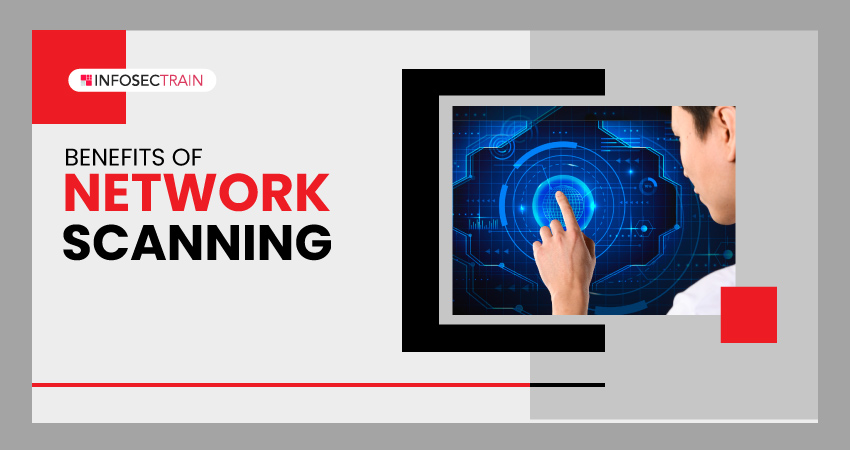
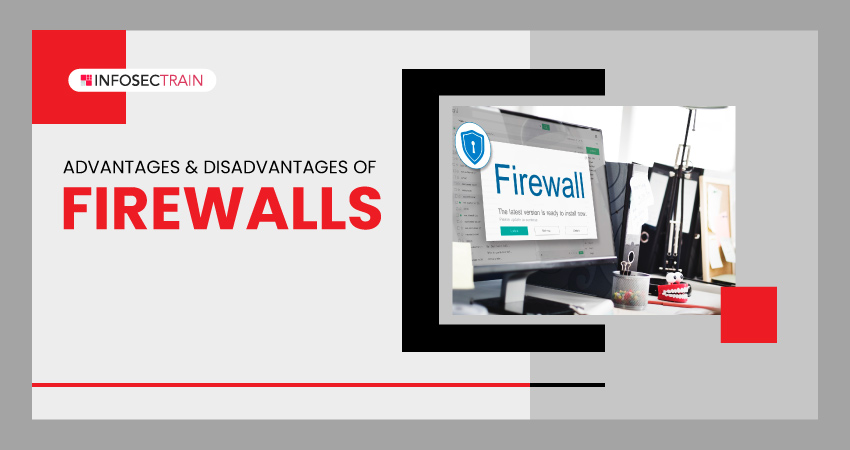
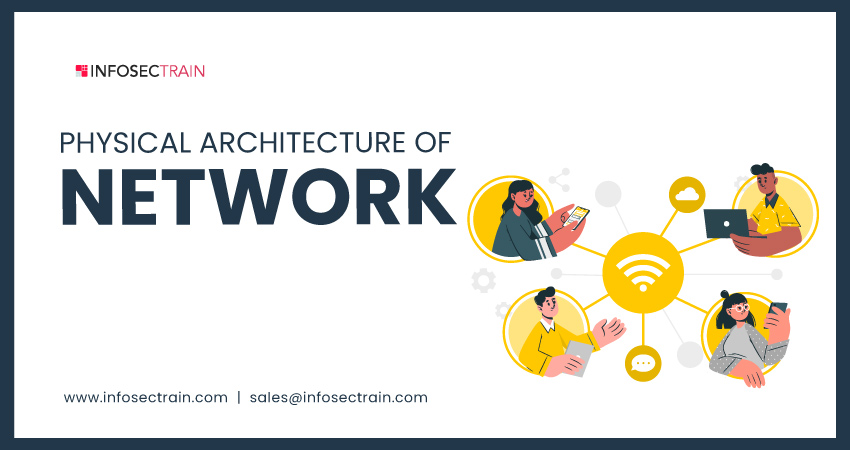
 1800-843-7890 (India)
1800-843-7890 (India) 
